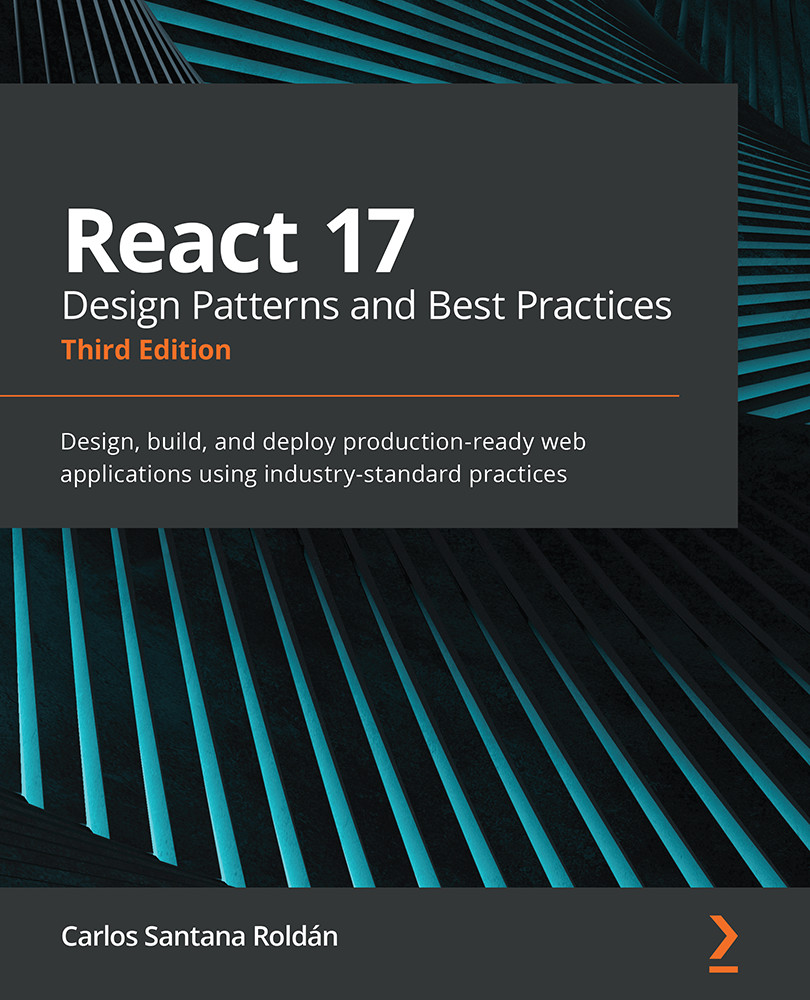-
Book Overview & Buying

-
Table Of Contents
-
Feedback & Rating

React 17 Design Patterns and Best Practices - Third Edition
By :

React 17 Design Patterns and Best Practices
By:
Overview of this book
Filled with useful React patterns that you can use in your projects straight away, this book will help you save time and build better web applications with ease.
React 17 Design Patterns and Best Practices is a hands-on guide for those who want to take their coding skills to a new level. You’ll spend most of your time working your way through the principles of writing maintainable and clean code, but you’ll also gain a deeper insight into the inner workings of React.
As you progress through the chapters, you’ll learn how to build components that are reusable across the application, how to structure applications, and create forms that actually work. Then you’ll build on your knowledge by exploring how to style React components and optimize them to make applications faster and more responsive.
Once you’ve mastered the rest, you’ll learn how to write tests effectively and how to contribute to React and its ecosystem.
By the end of this book, you'll be able to avoid the process of trial and error and developmental headaches. Instead, you’ll be able to use your new skills to efficiently build and deploy real-world React web applications you can be proud of.
Table of Contents (21 chapters)
Preface
Hello React!
 Free Chapter
Free Chapter
Taking Your First Steps with React
Cleaning Up Your Code
How React Works
React Hooks
Exploring Popular Composition Patterns
Understanding GraphQL with a Real Project
Managing Data
Writing Code for the Browser
Performance, Improvements, and Production!
Making Your Components Look Beautiful
Server-Side Rendering for Fun and Profit
Improving the Performance of Your Applications
Testing and Debugging
React Router
Anti-Patterns to Be Avoided
Deploying to Production
Next Steps
About Packt
Customer Reviews

